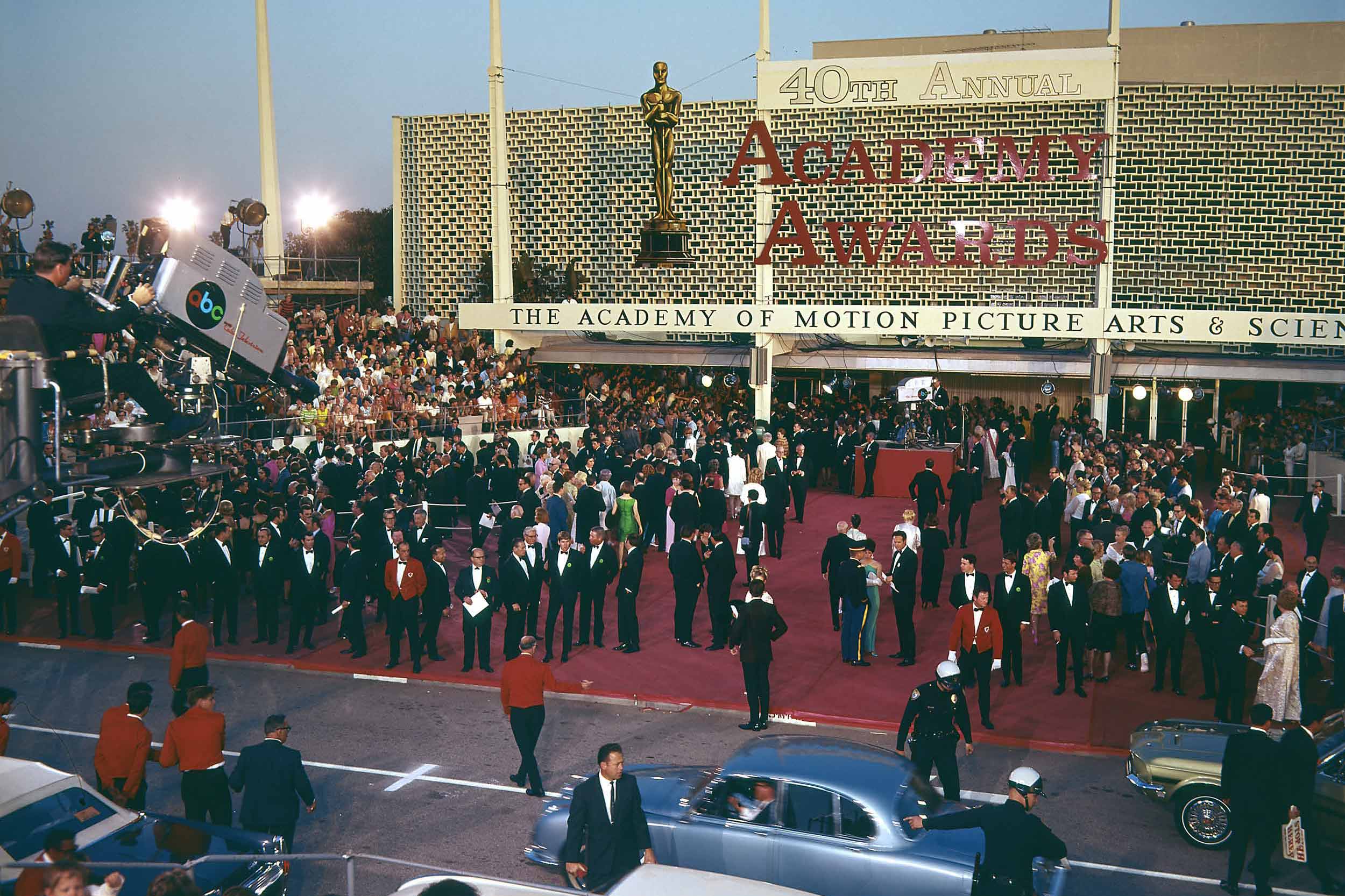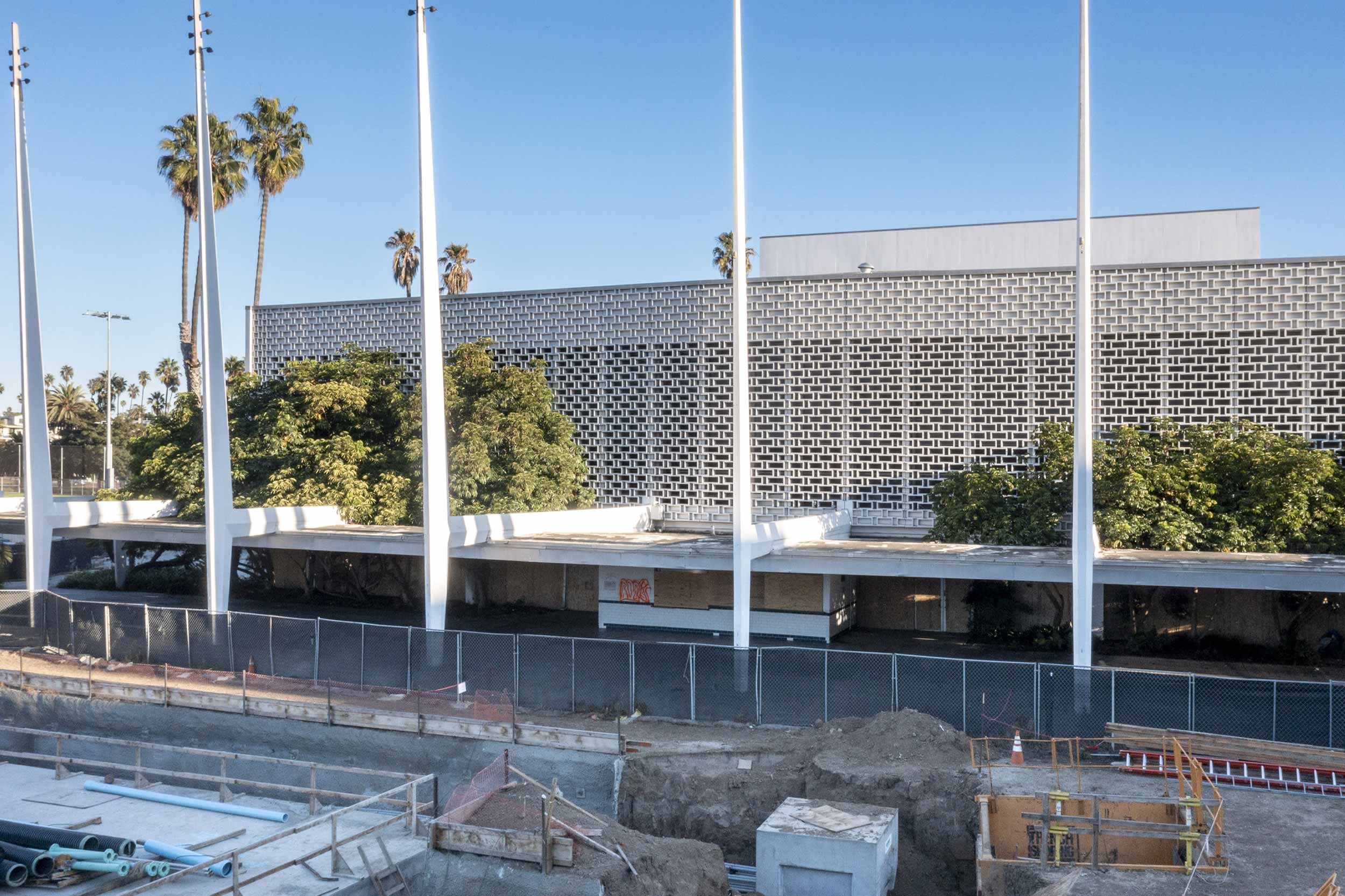The Santa Monica Civic Auditorium was designed by Welton Becket along with the city hall and courthouse, but the distinctive, mid-century modern structure also played home to the Academy Awards through the tumultuous and transformative ‘60s. In 1962, it was the site of the ceremony’s first protest, as Black actors picketed in response to mistreatment by the film industry. The 1968 ceremony was postponed due to Martin Luther King Jr.’s assassination. The Civic Auditorium was also the site of more celebratory milestones for people of color, including Sidney Poitier’s Best Actor win for Lilies of the Field (USA, 1963) and Rita Moreno’s win for Best Supporting Actress for West Side Story (USA, 1961). The venue also hosted the first broadcast of the ceremony in color in 1966.


Images: (left) The exterior of the Santa Monica Civic Auditorium during the Academy Awards ceremony, 1967. Courtesy of Academy Awards show photographs, Margaret Herrick Library, Academy of Motion Picture Arts and Sciences; (right) Santa Monica Civic Auditorium. Photo by Joshua White, JWPictures/©Academy Museum Foundation
Sitting on the other side of Los Angeles from Hollywood’s most famous hotels, theaters, and Academy Awards venues, the Santa Monica Civic Auditorium might seem a strange site for the Oscars ceremony. The modernist building was designed by architect Welton Becket, whose firm was responsible for some of Los Angeles’s most recognizable structures, including the Capitol Records building, portions of Los Angeles International Airport, and the Dorothy Chandler Pavilion. The Civic Auditorium was part of a complex of ‘50s-era structures that originally included Santa Monica’s city hall and municipal courthouse. The Auditorium was hardly glamorous, but by 1961 the Awards had outgrown Grauman’s Chinese Theatre, and the recently constructed 3000-seat Civic Auditorium in Santa Monica was one of the largest available venues at the time.
The Auditorium would host the Academy Awards from 1961 to 1968, and the new venue was noted right away. After the 1961 ceremony, the Los Angeles Times praised the new location’s spacious interiors and more expansive red carpet. The modernist trappings would also prove an appropriate backdrop for a technical innovation in 1966, when the Academy Awards was broadcast in color for the first time.





Though the new venue proved to be a good solution to the ceremony’s growing logistical needs, the tumults of the 1960s would also roil the Academy Awards. In 1962, Caleb Peterson, a Black actor, and members of the organization he’d cofounded, the Hollywood Race Relations Bureau, picketed outside the ceremony in protest of “the discriminatory practices of the motion picture industry.” Twelve of the 125 protestors were jailed, and one was injured during their arrest. The organization’s lawyers argued in court that the protestors had a right to assemble. Still, the arrests were upheld on the grounds that the protest occurred on the red carpet and constituted trespassing.
Despite the treatment of Peterson and the members of the Hollywood Race Relations Bureau, other actors of color celebrated landmark Academy Awards milestones during this time. The same year of Hollywood Race Relations Bureau’s protest, Rita Moreno became the first Latina actress to win an Academy Award, winning for Best Supporting Actress in West Side Story (USA, 1961). Two years later, Sidney Poitier became the first Black actor to win Best Actor, winning for Lilies of the Field (USA, 1963).
The last ceremony held at the Civic Auditorium was both its most eventful and tragic. On April 4, 1968, Martin Luther King Jr. was assassinated in Memphis, Tennessee, and his funeral occurred on the same day as the long-scheduled 1968 Academy Awards ceremony. Sidney Poitier, Diahann Carroll, Sammy Davis Jr., and Louis Armstrong—all of whom had planned to take part in that year’s ceremony—withdrew out of respect for Dr. King. Soon after, the Academy postponed the Awards and canceled the Governor’s Ball. When the show occurred two days later, it opened with somber remarks from Academy President Gregory Peck. “Society has always been reflected in its art,” Peck said, “and one measure of Dr. King’s influence on the society we live in is that of the five films nominated for Best Picture of the Year, two dealt with the subject of understanding between the races.” The two films Peck referred to were Guess Who’s Coming to Dinner (USA, 1967) and In the Heat of the Night (USA, 1967). Sidney Poitier starred in both films, although his work was not nominated for either. However, In the Heat of the Night won five awards, including Best Picture. The following year, the ceremony outgrew the Civic Auditorium and moved to Downtown LA’s Dorothy Chandler Pavilion in 1969.